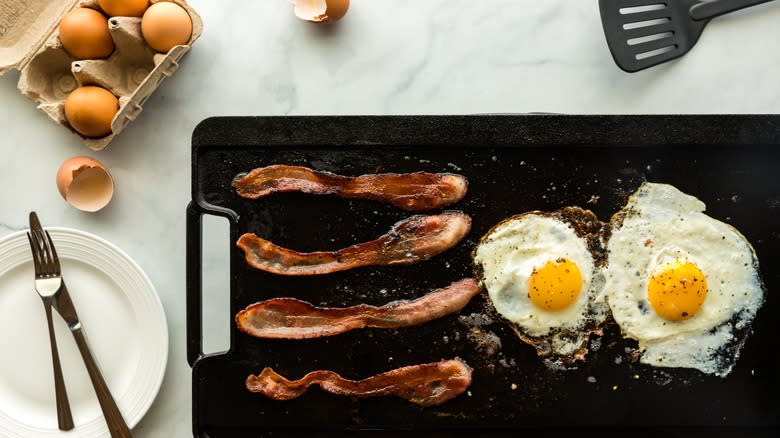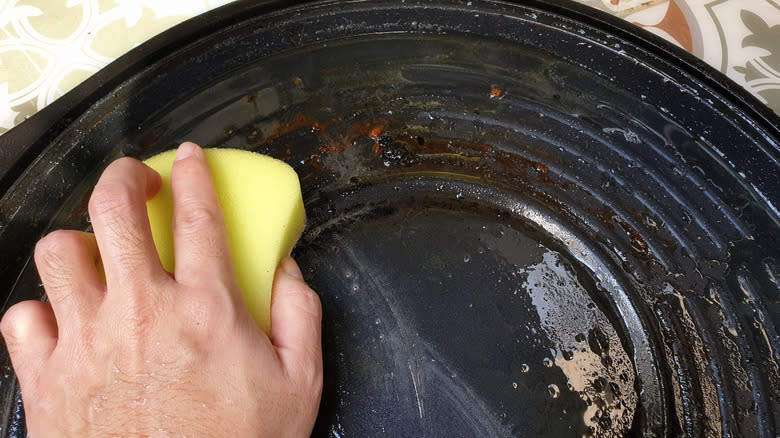The Simple Tool You Need To Clean Burnt Bits Off Your Cast Iron Griddle

For cooking enthusiasts, a cast iron griddle is a kitchen staple. It is well-liked for its exceptional heat retention, and the wide surface area allows for batch cooking. When seasoned sufficiently, you're guaranteed a non-stick surface that'll rival even the most high-end non-stick pans. From preparing sandwiches to enjoying some indoor grilling of meats and vegetables, a cast iron griddle is the go-to cookware. However, with all these benefits, cast iron demands extra care especially when it comes to cleaning.
Washing stuck-on food from a cast iron griddle can be daunting; you need to apply some elbow grease to remove the stubborn remnants while at the same time, you must ensure you don't damage the cooking surface. It's a pretty delicate balance to strike. The solution? Using a bench scraper. Celebrity chef Michael Symon calls this basic tool "the greatest" thanks to its versatility in handling multiple tasks in the kitchen, but when it comes to cleaning your cast iron griddle, don't just buy any bench scraper. Get a non-metal one, e.g., plastic.
Unlike a metal scraper, which can scratch and damage the surface of your griddle, a plastic scraper is gentle yet effective at dislodging burnt bits without causing any harm. You won't need to worry about stripping off your hard-earned seasoning and losing all the non-stick property, or even leaving the griddle vulnerable to rust. Moreover, a scraper works effectively by reaching all the corners and edges to remove every bit of stuck food.
Read more: 11 Cleaning Tips For Keeping Your Oven Spotless
How To Properly Clean Your Cast Iron Griddle

Every time you use your griddle to cook, you must clean it before storing it away. First, let it cool down. If there's stuck-on food, you can start cleaning the surface while it's still slightly warm because the heat helps loosen the dirt. Using the plastic bench scraper, gently scrape away the burnt bits by pushing the scraper in a slant position across the griddle top. Do this over the entire surface area of the griddle while paying special attention to the corners where food can easily get lodged and forgotten.
After scraping, rinse the griddle using warm water. In case there are still some stubborn spots, your next line of defense is coarse salt. Sprinkle it on the griddle, then use a wet sponge to scrub away the residue. You can use mild soap for the final wash then finish off with a thorough rinse, just be sure not to leave cast iron soaking in soapy water.
With your cast iron griddle completely clean, use a paper towel to wipe it dry, then place it on the stovetop at low heat to ensure any remaining moisture evaporates. This thorough drying process will help prevent the dreaded rust from developing on your griddle. The final step is seasoning the cast iron. Apply a light coating of oil on the entire surface and heat the griddle briefly on the stovetop or in the oven. Finally, store your griddle in a clean and dry place.
Read the original article on Tasting Table

